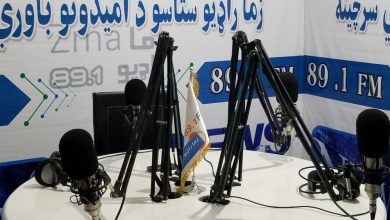
Media in Bamyan Banned from Publishing Images of Living Beings
The Afghan Journalists Center (AFJC) reports that a directive banning the publication of images of living beings has been issued to media outlets in Bamyan province.
In a statement released today (Tuesday, April 22), the AFJC said that the Taliban’s Department for the Promotion of Virtue and Prevention of Vice in Bamyan has issued an official letter to local offices prohibiting the capturing and publishing of images of living beings.
The AFJC has reviewed a copy of the letter, signed by Mawlawi Abdullah Sarhadi, the Taliban-appointed governor of Bamyan, which stresses that no local departments are allowed to record or broadcast images of individuals during meetings and official events. It further states that violators will face legal consequences.
Two local sources in Bamyan also confirmed to the AFJC that the letter was sent to various offices in recent days and is now being enforced. According to the directive, departments are only allowed to submit reports in written or audio formats, without images of living beings.
Following this decision, the AFJC expressed serious concern about the expanding ban on the publication of images of living beings in Afghanistan. It warned that such restrictions violate the principles of freedom of expression and the country’s media law, potentially leading to journalist unemployment and the closure of more media outlets.
According to the AFJC’s findings, since the implementation of the Promotion of Virtue and Prevention of Vice law in August 2024, this restriction has been officially enforced in at least 15 provinces.
Despite widespread criticism of the law, the Taliban’s supreme leader, Mullah Hibatullah Akhundzada, continues to insist on its full enforcement and has called for the formation of enforcement committees across the country.
The AFJC has urged Taliban authorities to reconsider this decision and, by revoking restrictive directives, create an environment for free media operations in accordance with Afghanistan’s media law.



